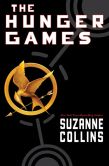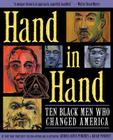I have featured Books for Africa several times on this blog. It is such a worthwhile and noble charity, so this news is especially wonderful.
 Books for Africa, the St. Paul, Minn.-based organization that collects donated books and ships them to schools and libraries in 49 African countries, has announced that the Nigerian-based Sir Emeka Offor Foundation has donated $600,000 to BFA. It is the largest cash donation BFA has received in its 25-year history.
Books for Africa, the St. Paul, Minn.-based organization that collects donated books and ships them to schools and libraries in 49 African countries, has announced that the Nigerian-based Sir Emeka Offor Foundation has donated $600,000 to BFA. It is the largest cash donation BFA has received in its 25-year history.
The money will be used to ship 1.1 million books to Nigeria, as well as to The Gambia, Somalia, Liberia, Tanzania, Namibia, Senegal, Ethiopia, Kenya, Rwanda, Botswana, South Africa, Sierra Leone, Egypt, and Malawi.
 Books for Africa, the St. Paul, Minn.-based organization that collects donated books and ships them to schools and libraries in 49 African countries, has announced that the Nigerian-based Sir Emeka Offor Foundation has donated $600,000 to BFA. It is the largest cash donation BFA has received in its 25-year history.
Books for Africa, the St. Paul, Minn.-based organization that collects donated books and ships them to schools and libraries in 49 African countries, has announced that the Nigerian-based Sir Emeka Offor Foundation has donated $600,000 to BFA. It is the largest cash donation BFA has received in its 25-year history. The money will be used to ship 1.1 million books to Nigeria, as well as to The Gambia, Somalia, Liberia, Tanzania, Namibia, Senegal, Ethiopia, Kenya, Rwanda, Botswana, South Africa, Sierra Leone, Egypt, and Malawi.
The Sir Emeka Offor Foundation was founded by a Nigerian business entrepreneur in the mid-1990s to “positively render assistance” to those in need, “irrespective of tribe, creed, religion and nation.”
 | ||
| BFA Founder Tom Warth with students |
The foundation, which emphasizes health and education programs in Nigeria and beyond, began partnering with BFA in 2010 to ship books to Nigeria and The Gambia. To date, the foundation has sponsored the shipment of 640,000 books to those two countries through BFA, including 110,000 books in 2012 as part of BFA’s “Million Books to The Gambia” campaign.
Since 1988, BFA has shipped 28 million books to Africa from the United States.
























